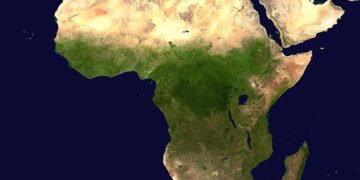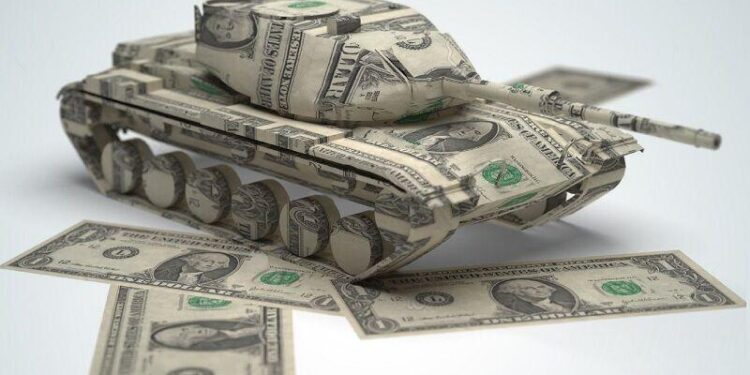As international tensions escalate and sanctions tighten, Iran’s economy has increasingly adapted to the pressures of prolonged conflict and geopolitical isolation. In this special report, The Economist delves inside Iran’s war economy, uncovering how the government, military, and private sectors intertwine to sustain the country’s strategic ambitions. From covert trade networks to the role of paramilitary forces in commerce, this investigation reveals the shadowy economic mechanisms that underpin Tehran’s resilience amid mounting external and internal challenges.
Iran’s Shadow Industry Fuels Military Ambitions Amid Sanctions
Over the past decade, Iran has significantly expanded a clandestine network of factories and workshops dedicated to producing military-grade technology and equipment. These shadow industries operate under strict secrecy, circumventing international sanctions designed to cripple Tehran’s defense capabilities. From manufacturing missile components to reverse-engineering drones, this covert infrastructure has become a cornerstone of Iran’s strategy to maintain and modernize its armed forces without relying on foreign imports.
Key elements driving this hidden war economy include:
- Utilization of domestic talent and scarce resources to innovate under pressure
- Integration of civilian industries with military production lines
- Use of smuggling routes and black-market supply chains for critical materials
| Product | Estimated Output (2023) | Purpose |
|---|---|---|
| Short-range Missile Parts | 3,500 units | Regional deterrence |
| Recon Drones | 750 units | Surveillance & intelligence |
| Armored Vehicle Components | 1,200 units | Ground force modernization |
Navigating Corruption and Innovation Within Iran’s War Economy
Within the complex framework of Iran’s war economy, corruption intertwines tightly with innovation, creating a paradoxical landscape where survival and manipulation coexist. Military and paramilitary factions have carved out economic fiefdoms, leveraging their influence to secure lucrative contracts and resources. This concentration of power often breeds opaque financial flows, complicating efforts to trace or regulate funds. However, these groups have also demonstrated a surprising agility in adopting advanced technologies, from drone warfare to cyber capabilities, effectively circumventing international sanctions and reshaping the battlefield.
- Military Industrial Conglomerates: Operate with quasi-autonomous status, combining state funding with revenue from commercial enterprises.
- Sanctions Evasion Networks: Utilize shell companies and barter trade systems across regional borders.
- Tech Adaptation: Rapid development of indigenous weapon systems and cyber tools reflects an innovative mindset tailored to resource constraints.
| Sector | Corruption Risks | Innovation Examples |
|---|---|---|
| Defense Manufacturing | Kickbacks; inflated contracts | Unmanned combat drones |
| Energy Supply | Resource misallocation; smuggling | Smart grid installations |
| Logistics & Procurement | Fictitious invoicing; insider deals | Blockchain-based tracking trials |
Strategies to Curb Iran’s Defense Financing and Promote Regional Stability
Addressing Iran’s complex web of defense financing demands a multifaceted approach that combines economic pressure with diplomatic engagement. Targeted sanctions remain a cornerstone tactic, aimed specifically at entities and individuals within Iran’s military-industrial complex involved in procuring weaponry and illicit funds. However, these measures must be complemented by enhanced international financial transparency, pushing global banks and businesses to rigorously scrutinize transactions linked to Iranian defense networks. Strengthening cooperation between Western and regional intelligence agencies is essential to disrupt smuggling routes and illicit trade channels that contribute to Tehran’s war economy.
Equally important is fostering regional stability through dialogue and integration rather than isolation. Diplomatic initiatives that encourage Iran’s reintegration into the global economic system, contingent on verifiable cuts to its defense spending, could incentivize reforms. Supporting local economies and civil society groups in neighboring countries vulnerable to spillover conflicts reduces the appeal of proxy escalations. Below is a summary of key strategies for curbing Iran’s defense financing:
- Enhanced financial sanctions targeting defense supply chains
- International intelligence-sharing on illicit networks
- Diplomatic engagement with conditional economic incentives
- Support for regional development and conflict prevention programs
| Strategy | Expected Impact | Key Actors |
|---|---|---|
| Sanctions on military supply networks | Reduce weapons procurement | UN, US Treasury, EU |
| Intelligence cooperation | Disrupt illicit financing | Western & regional agencies |
| Conditional economic reintegration | Promote defense budget cuts | Diplomats, global trade bodies |
| Regional development aid | Lower proxy conflict risks | NGOs, local governments |
Closing Remarks
As Iran continues to grapple with economic sanctions and regional instability, the intricate web of its war economy remains a critical factor shaping both its domestic landscape and foreign relations. Understanding the mechanisms behind this shadow economy is essential for policymakers and analysts seeking to navigate the complexities of Tehran’s strategic calculations. While the full impact of these dynamics unfolds, the global community must watch closely how Iran’s war economy influences the balance of power in the Middle East and beyond.































